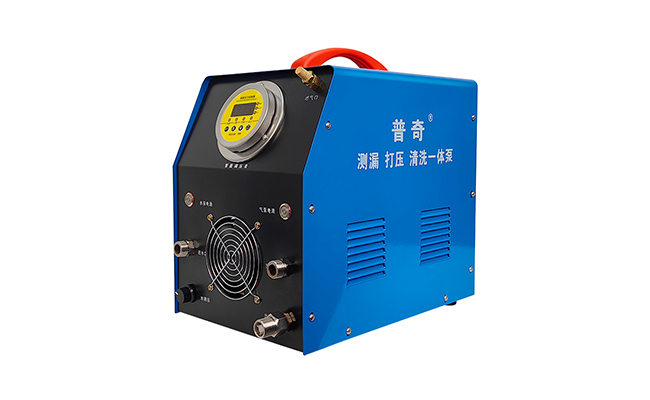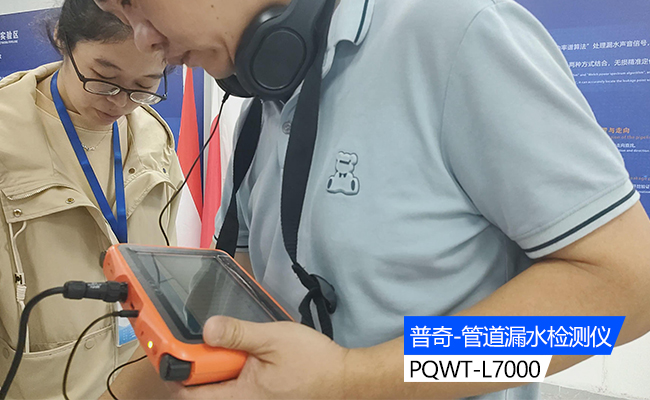Pipe leakage is a common problem in home life, which not only causes financial loss, but also affects the quality of life. In order to solve this problem, it is very important to understand the methods and precautions of home pipe leak detector. In this article, we will provide you with a detailed guide to home pipe leakage testing to help you solve the leakage problem.

I. Site Survey
Before you start leak detection, you need to survey the site first. Look for signs of leaks, the area of the leak, the location of the leak, the size of the leak, and ask the homeowner when the leak appeared. This information will help determine the source and cause of the leak.
II. Perform a Pipe Pressure Retention Test

In the pipeline pressure retention test, you need to remove all the angle valves, faucets, water meters, etc., and plugged with a plug to prevent pressure leakage. Then use water and gas pressure pumps for cold and hot water pipes for water pressure pressure test. In the testing process, you need to pay attention to observe the pressure change of the oil pressure gauge. If the pressure change is less than 0.3 kilograms or less, the pipeline does not exist leakage; if the pressure change is greater than 0.3 kilograms or the rate of pressure drop is obvious, the pipeline leakage phenomenon.
Third, to determine the location of the pipeline
After determining the leakage of pipeline, need to understand the specific location, direction, and distribution of pipeline. When the owner can not provide detailed drawings of the pipeline, need to use the "pipeline locator" on the pipeline census positioning. By injecting hot water of more than 50 degrees into the cold water pipe, 30 minutes after the opening of the "pipeline direction locator" scanning the ground aligned with the direction of the pipeline can be presented and marked on-site. In addition, turn on the electric water heater or gas water heater temperature rises to more than 50 degrees, open the hot water faucet for 30 minutes, and then turn on the "pipeline direction locator" scanning the ground, you can also present the pipeline direction and on-site marking. In the operation process need to pay attention to the following matters:
1. The greater the temperature difference between the temperature inside the pipe and the ground temperature, the clearer the pipe direction presented by the pipe locator;
2. Pipe elbows, tees and other connections to make key markings.
Fourth, accurate positioning of water leakage points

In the relatively quiet conditions of the indoor environment, open the water and gas pump air pressure mode pressurized 6-12 kg, open the "home pipeline leak detector" along the location of the pipeline marked for one by one inspection. When the headset heard similar to the gas splash produced by the "bare" or "hissing" sound, bubbles drumming water flow sound, sound size is significantly higher than other areas, while observing the instrument screen, the spectral signal is significantly higher than the rest of the suspected leakage point has been localized. Then retest to verify the leak again. Then repeat the test again to verify the leakage point, when the suspected leakage point is locked, open the instrument's localization mode, the suspected leakage area pipeline is divided into N points to record the signal value of each measurement point, and again for comparison. When the highest signal value coincides with the location of the suspected leakage point, it means that the leakage point has been locked. In the operation process need to pay attention to the following matters:
1. Try to keep the operation as quiet as possible, indoor personnel to reduce walking, turn off the TV, air conditioning, refrigerators and other household appliances that may produce noise interference;
2. In order to improve the detection effect, to the pipeline air pressure when first discharged from the pipeline residual water, gradually incremental to the pipeline pressurization to 6-12 kg interval for testing;
3. To avoid secondary damage to the pipeline when pressurizing, according to the actual situation of the pipeline material, age, etc., please gradually increase the pressure from low to high when pressurizing;
4. In order to avoid the artifacts caused by cavity, crosstalk and other factors when locating the leakage point, it should be repeatedly verified by constantly changing the pressure before excavating the fixed point.








